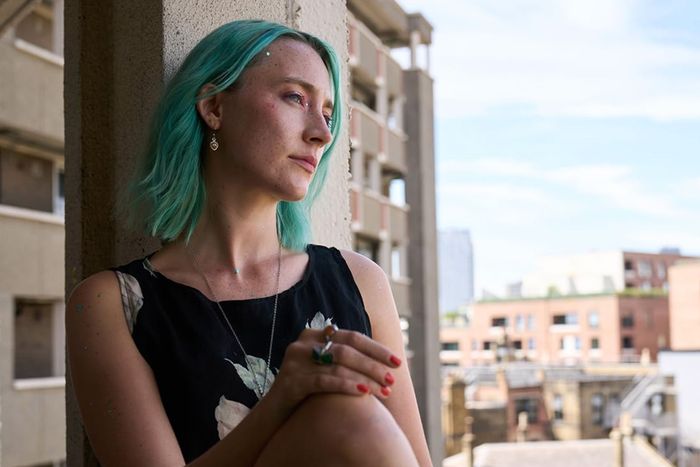
This review was originally published out of the Sundance Film Festival on January 22, 2024. We are recirculating it now that The Outrun is in theaters.
Saoirse Ronan gives one of her most transcendent performances in Nora Fingscheidt’s windswept drama The Outrun, playing a woman trying to rebuild her life after returning to her childhood home in the Orkney Islands. The film, based on Amy Liptrot’s 2016 memoir of addiction and recovery, drifts back and forth between its protagonist’s present and her past as an out-of-control alcoholic in London. It also hops along different periods in her rehabilitation, never quite following a clean and steady narrative line, which puts quite a bit of responsibility on Ronan’s performance. We chart her character’s progression through her eyes and her physicality.
“In Orkney, it’s said that people who’ve drowned are turned into seals. We call them selkies,” Rona (Ronan) tells us in voice-over at the start of the film. “At the highest tides, they slip off their seal skins in the night and come ashore as beautiful people. And they dance together naked in the moonlight.” Graceful underwater images then transform into slowly swaying shots of Rona herself in a club, seemingly submerged under waves of blue light. She then tells us that if selkies are seen by others, they’ll be stuck on land, forever discontent, “because they belong to the sea.” We then see Rona stumbling into an empty bar at closing time, trying to drain the half-finished glasses and bottles strewn about. Her friendly, stumbling, slurry energy immediately turns violent when the bouncer tries to escort her out. Soon, she’s face down in the street.
Such an opening might suggest we’re in for a straight dose of miserabilism, but director Fingscheidt wants us to understand the allure of drunken, hedonistic abandon without flinching from its brutal, debilitating consequences. The film often unfolds in (I’m sorry, I’m gonna say it) intoxicating montages that present elliptical flashes of Rona’s downward spiral in the city — where her addiction destroyed her friendships, her job, and her romantic relationship — and juxtapose them with glimpses of life in the Orkneys. We get the beauty of a boozy reverie at the disco, and the sense that somewhere in that strobing madness, Rona maybe connects with some inner sense of herself; techno beats and wild nights blend with swelling waves and striking, desolate beaches. The film is, first and foremost, a visual and sonic experience. We can lose ourselves in it. I think we’re meant to.
But Rona’s life back with her family is also full of turmoil. Her father (Stephen Dillane) has bipolar disorder, and her mother (Saskia Reeves) has devoted her life to religion, perhaps in an effort to heal her own inner wounds. What comes through in all their exchanges is how lonely all these people are. Rona attends AA meetings, spends time with her mom and her friends, helps her dad with his flock and his fields, but at heart, each of these individuals has to face their demons by themselves. The spectral light in Saoirse Ronan’s eyes speaks volumes; this young woman is terrified of the world around her. Even as she goes nearly a year sober, we see that she’s never at peace.
I haven’t read Liptrot’s book, but I gather it’s filled with observations about life in the region, its myths, its flora and fauna. The film also presents these, via voice-over, archival footage, snapshots, and even animated passages. Rona has a degree in biology, and works for a while for the Royal Society for the Protection of Birds, helping preserve and catalogue rare corncrakes, and later researches seaweed, convinced it holds planet-saving qualities. She also tells us about the Mester Stoor Worm, a massive sea beast with a tail that could wrap around the world, and whose putrid breath and burning liver cause the winds and rumbling quakes of the Orkneys. Tales such as these speak to the fundamental helplessness of humans in the midst of nature, but they also hint at a fantasy of power: If another being can exert such command over our worlds, then so perhaps can we. That idea — full of tension, frustration, possibility — fuels the whole film, and Ronan’s performance specifically. The Outrun is ultimately about how our search for certainty and control all too often results in the loss of what little we do have.
More Movie Reviews
- The Accountant 2 Can Not Be Taken Seriously
- Another Simple Favor Is So Fun, Until It Gets So Dumb
- Errol Morris Has Been Sucked Into the Gaping Maw of True Crime


